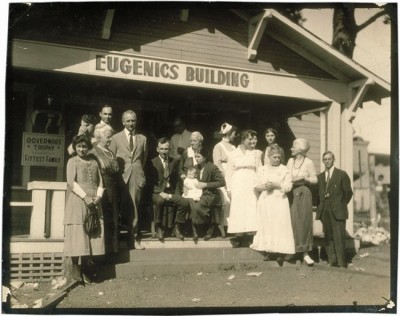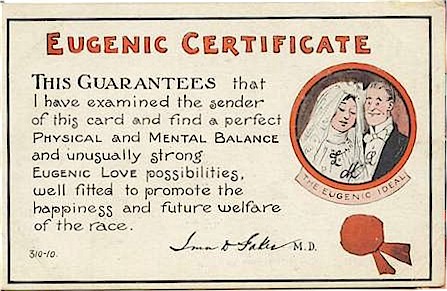The historiography of science, race, and gender in the US South and the legal-historico-scientific lessons it provides. This is Part 1 of 3.
If contemporary discourse of race in the United States is informative of its past, it is also indicative of the socio-intellectual genealogy that constructed its analytics since before the Civil War.
The study of race is one that is most riddled with cognitive dissonance even among prominent scholars.
Due to the positivistic ideology that permeates the intellectual climate of the United States, it is not surprising that those involved in race studies have historically turned to scientific discourse as a way for legitimising biological theories of race, as well as used scientific methodologies for carving more precise definitions of race.
This works on both ends of the spectrum; from racist conservatives who tried to argue against the incompatibility between races and incompatibility between different genetic pools or genomic medians, all the way to those who attacked the conservatives for their misappropriation of the definitions of race and species, propagation of scientifically unsound theories on eugenics, and the abuse of psychometric testing of intelligence.

It is one of the many ironies of the aftermath of the Enlightenment that science has been used in the service of imperialism, supremacism and the doctrine of “a white man’s burden.” Hence, it is relatively unsurprising that the ideological and socio-cultural discourse of race in Europe, and later in the United States, has often seen the use of “scientific” arguments to support their “findings,” and even the misuse of empirical results.
However, the lack of empirically reproducible findings is also very present in the polemical, pseudo-scientific writings of many racist and supremacist sociologists such as Earnest Sevier Cox in the South and Madison Grant in the North. Thomas Jefferson himself was convinced of the inferiority of the African-American race (and was himself a plantation slave-owner), so much so that if one were to read his “Laws,” one could see how he had invoked the language of property rights and imperialistic form of natural history to discuss the Afro-American population.
To our reproach it must be said, that though for a century and a half we have under our eyes the races of black and of red men, they have never yet been viewed by us as subjects of natural history. I advance it therefore as a suspicion only, that the blacks, whether originally a distinct race, or made distinct by time and circumstances, are inferior to the whites in the endowments both of body and mind.
It is not against experience to suppose, that different species of the same genus, or varieties of the same species, may possess different qualifications. Will not a lover of natural history then, one who vies the gradations in all races of animals with the eye of philosophy, excuse an effort to keep those in the department of man as distinct as nature has formed them?
This unfortunate difference of colour, and perhaps of faculty, is a powerful obstacle to the emancipation of these people.
(See pg 28 of “Laws” (Query XIV) in The Nature of Difference: Sciences of Race in the United States from Jefferson to Genomics. Eds. Evelynn M Hammonds and Rebecca M Herzig. Cambridge, MA: MIT Press, 2008)
In the same essay, Jefferson evokes the greater “superiority” of the white slaves of the Greeks and Romans in terms of their ability to leave behind a legacy of intellectual and artistic creations even though they were treated no better than property and their punishment were cruel and draconian. Jefferson is just one in the long line of prominent public persona who had no qualms in marshalling “scientific” language to back up their racial views.
In this essay, I am interested in understanding how genetics is appropriated in the racial discourse, especially of the American South, from the time of the Reconstruction era up to the end of the Second World War, in the service of (and against) eugenics.
I want to better understand the role women played as active participants in the eugenics movement.
Finally, I am also interested in looking at how the eugenics movement have affected and effected Southern racial relations, and how scientific discourse is used to influence the public sentiment and policy in the South, culminating in the case of Brown vs Board of Education.
White supremacists had worked hard in the Reconstruction and its aftermath to deprive black Americans of access to quality education, especially through their refusal to acknowledge how the black citizens themselves had banded together and worked hard to establish their own schools and colleges despite constant impoverishment and other discriminations (white Southerners largely refused to allow tax monies be used to fund schools for African-Americans).
Despite the former’s determination to pigeonhole black constituents into roles of vocational service, and the later use of IQ scores as grounds against the approval of any affirmative action programs, many of the anti-Nordicists and growing breed of scientists (especially from marginalised backgrounds) fought back to call the supremacists’ bluff by working hard to provide solid evidence to the contrary (see Glenda Gilmore’s Gender and Jim Crow: Women and Politics of White Supremacy in North Carolina 1896-1920 and Race and Science: Scientific Challenges to Racism in Modern America). In the South particularly, there was little public support for the education of women (save the individual efforts of the more enlightened “men”). However, Gilmore argues that in the age of Reconstruction, before the erosion of the legal rights as well as government-initiated disenfranchisement of the African-American communities, the education of women were seen as vital to improving the fortunes and raising an able and competitively-placed generation of African-Americans. Hence, black men and women were educated side by side, and were given equal opportunities to become college teachers in colleges set up especially for their community.
Before proceeding further, I would like to look at some of the definitions on race in a few samples of scientific documents published in the United States between 1886 and 1956. Interestingly, many of these definitions were published in medical and anthropological reference volumes.
- From the Complete Pronouncing Medical Dictionary: Embracing the Terminology of Medicine and the Kindred Sciences, with their Signification, Etymology, and Pronunciation: Race (from the Italian raz’za which is probably from the Latin ra’diz, a “root”). Races of men are permanent varieties of the human species, characterised by certain prominent distinctive traits. To classify nations by their complexion is scarcely more reasonable or more scientific than it would be to classify fruits by their color.
- From A Practical Medical Dictionary (1911) by T.L. Stedman: Race: a division of mankind, regarded also as species, such as Caucasian, Mongolian, and Negro; a tribal division; an artificial division of animals kept distinct only through careful husbandry.
- From Gould’s Medical Dictionary (1928) by G.M. Gould: Race: a genealogic, ethnic, or triba [sic] stock; a breed or variety of plants or animals made permanent by constant transmission of its characters through the offspring.
- From Dictionary of Anthropology (1956) by C. Winick: Race: a major division of mankind with distinctive, hereditarily transmissible physical characteristics, e.g. the Negroid, Mongoloid, and Caucasoid races. The race can also be seen as a breeding group with gene organisation that differs from that of the other intra-species group. Hence, the morphological and metrical features which members of a race have in common are derived from their common descent. Every race has an incredible range of internal variability through such identifying criteria as skin color, hair and eye color, prognathism, cephalic index, nasal index, skull capacity, hair texture, the degree of hirsuteness and lip eversion.
- From A Dictionary of Scientific Terms (1957) by I.F. Henderson and W.D. Henderson: Race as a permanent variety, a particular breed and a microspecies.
As we can see here, there is no one conclusive definition of race, and these are just a few selected ones. However, if we were to investigate further into how biology describes race, one will see that race is tied up with the idea of an intra/micro species that is different from the interpretation that the anti race-mixing groups had argued for.

The controversial application of genetics to pseudo-scientific racial supremacism was eugenics. Eugenics became the cause championed by the racist/racialist groups, which, in the United States, strangely, consisted of either irreligious or liberal Protestants. Such groups also existed in the South, except that they embraced a form of eugenics informed by the tenets of evangelical Christianity.
Hence, it is important to now look at the socio-cultural and political structure of the South from the beginning of Reconstruction circa 1865 until the 1950s.
Continues in Part 2 on Monday.
Clarissa is a graduate student in the US who works in the intersections of science studies, cultural studies, feminist theory and the digital humanities. She blogs at scandalousthoughts, among other places. She believes that Malaysia can learn much from the intellectual history of others.

Thanks for your response, Setia. I was hoping to show in my article, among other things, how racial practices are pursued via different ideological routes and how even areas that people like to think as being objective :law and science(also my indirect way of saying, religion) are free from abuse because none of these frameworks can function without people. There is also the subject of institutionalized power, but that will be further tackle later :). And of course, racism is a learned trait, and it is strange how our people think that we are free from colonialist ways when we still imbibed many of its values (which includes, among others, racism).
Hope you will stay to read the other two parts. Would like to know what you think after reading all three.
See below 5 item reminder of what Bar Council should be working for, if Bar Council is not a NWO.Illuminati/Anglo shill.
1) Freedom from Apartheid/Fascism
2) Freedom from Religious-Persecution/Religious-Supremacy.
3) Equality for all ethnicities and faiths in all aspects of policy, Law and Constitution.
4) TERM LIMITS for all Senators, MPs and Assemblymen
5) ASSET DECLARATIONS FOR ALL Party Members
6) Prohibition of Oligarchy or Family Fiefs in all political party committees or local councils (it is a political party not a family clan association)
Thank you for this article.Its timely as Malaysia is going through a changing phase and trying to come to terms with the blatant institutionalised Racism it practices and preach.
Hopefully one day the Public Service and Government Link Agencies will allow more Non Malays/Non Muslims to be employed and more opportunities in the public sector for all the races.
This is only good for the nation as to divide and discriminate against a minority race is detrimental to Malaysia.
Ex PM Mahathir's 'economic ethnic cleansing type of policy has divided the good people of Malaysia where most opportunities esp in public sector were reserved for one race only and where newly arrived immigrants (Muslims ) from Indonesia were conferred 'special privileges' the so called ' bumiputras-sons of the soil'. Yet Indians , Chinese and other minorities & their forefathers who have contributed immensely and paid for their lives in defending Malaya are treated very differently.
In the light of what happened during Hitler's time and his dream of a pure race,most Countries who practiced racism have abandon it as its destructive, wrong and go against the good in Mankind.
Hopefully one day racism will be a thing of the past in Malaysia.
Thank you once again for sharing with all Malaysians.